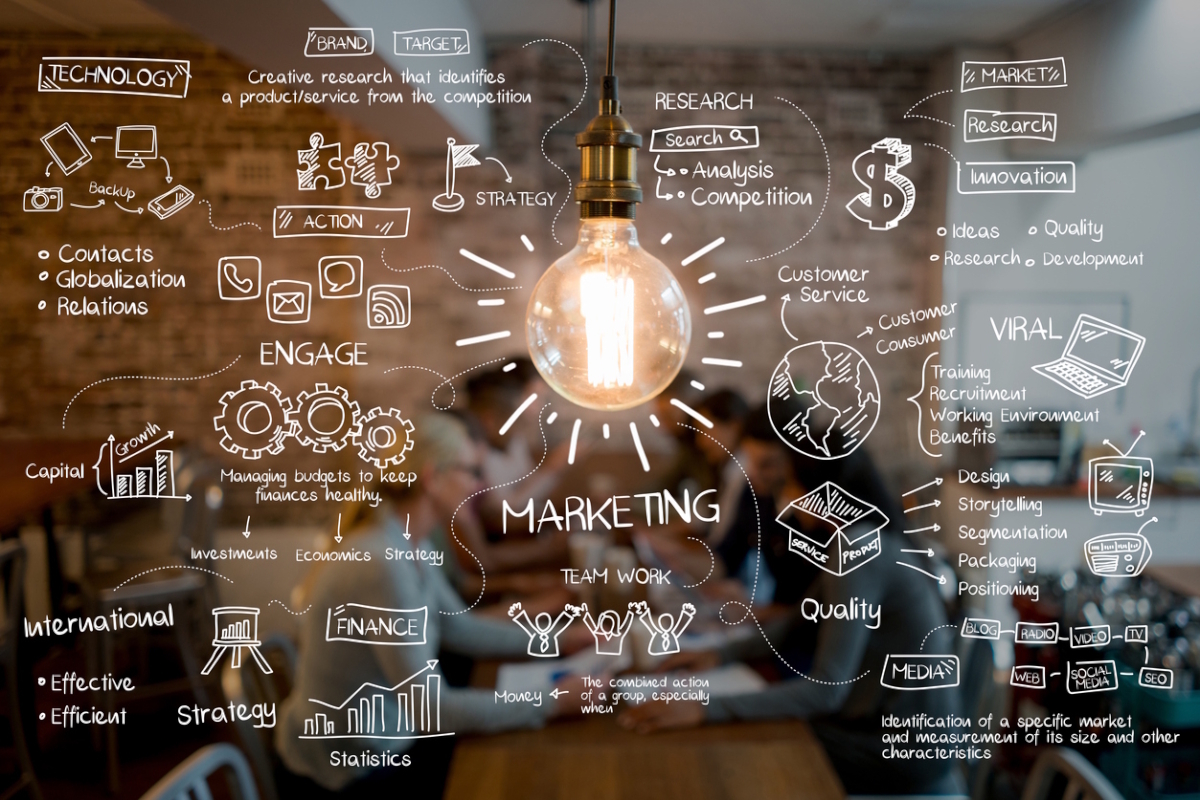Building marketing strategies with AI

Jenna Tiffany at marketing agency Let’s Talk Strategy considers how organisations can harness AI to build more innovative marketing strategies
Tactics-based marketing won’t suffice, especially in a world of generative AI. If you want people to focus on your message, your campaign needs to be targeted, punchy, timely and on-message. And that’s something only a good marketing strategy can achieve.
The opportunities and the pitfalls
When used strategically, AI can supercharge marketing in multiple ways:
- Efficiency and scale: AI can automate repetitive tasks, such as providing copywriting ideas, analysing past campaign performance and providing industry-specific research, freeing teams to focus more of their efforts on strategising. In a recent survey of marketers conducted by Let’sTalk Strategy and Email ToolTester, marketers most frequently cited time savings as the primary benefit of using AI (71.3%).
- Data-driven decision making: AI models ingest massive data sets to surface trends, anomalies, and correlations that humans often miss.
- Hyper-personalisation: AI can tailor messaging at scale, for individual segments or even individuals, improving relevance and engagement.
- Rapid testing and iteration: AI can help you model different campaign variants, simulate outcomes, and optimise faster than traditional A/B testing.
- Predictive insight: AI tools can forecast outcomes, recommend where to invest time, resources and budget, and alert you to potential underperformance early.
However, the challenges loom:
- Generic or bland output: Without strategic input, AI can produce content that feels generic, a common concern for marketers. The same survey also revealed that the biggest anxieties for marketers when using AI are producing generic content (63.2%).
- Erosion of creativity: Since much AI is pattern-based, overreliance may dull original thinking or compromise a brand’s voice. The loss of creativity was one of the second biggest anxieties for marketers surveyed, and let’s face it, that’s the human input (27.6%).
- Data quality dependencies: AI is only as good as the data it is fed; noisy, incomplete, or biased data will yield weak insights. Critical evaluation of the outputs is essential to question the results provided.
- Bias and ethical risk: There are biases embedded in AI models; as marketers, we need to bear in mind these considerations when asking AI to produce outputs.
Against this backdrop, business leaders need a way to harness AI without being consumed by it. That’s where the STRATEGY framework comes in.
The STRATEGY Framework: A guide to strategically using AI in marketing
The STRATEGY framework isn’t a theoretical exercise; it’s a tested, eight-step roadmap to align AI efforts with your organisation’s mission and market needs.
1. Scenario. Start by analysing your external and internal environments, including the macro (PESTLE, which identifies industry disruption) and micro (organisational strengths, weaknesses, opportunities, and threats) dynamics. AI can assist: prompt it to "Conduct a PESTLE analysis for industry X, focusing on key threats/opportunities," then inspect sources and ask it to summarise its top three findings per factor. This provides a sharper, more up-to-date view of your organisation’s landscape.
2. Targets. Next, define marketing objectives rooted in your organisational goals for the next 6–12 months. Feed those goals, along with your scenario insight, into AI, using a SMART framework. Ask AI to propose 2–4 marketing objectives tailored to your situation, and then refine them. This helps avoid vague or generic objectives.
3. Reach. With objectives in place, pivot to your customers. Use AI to analyse your existing customer data (anonymised), market research and online behaviour trends. Then ask AI to create customer personas and cluster them into groups.
These may include lifestyle, needs, pain points, and digital habits, all of which will guide how you reach them.
4. Audience. Give your AI-generated personas "voice" or role-playing capacity. For example, feed them a draft social post, and ask: "If you were this persona, how would you react? What might catch your attention, or push you to act?" This simulated feedback helps you refine messaging, tone, and content before going live.
5. Tactics. Once you’ve stress‑tested messaging with the AI personas, you can choose tactics that will reach, act, and engage. For example: content formats (video, microcontent, long-form), channels (email, social, search), campaign flows, triggers and automation rules. Let AI help you propose a tactical mix based on audience segments and budgets.
6. Execution. Many marketing software solutions now incorporate AI agents, generative modules, or optimisation components. But always supervise. Ensure human oversight, especially for brand voice, emotional tone, or sensitive calls to action. Use prompt-driven agents to dispatch campaigns, then review and validate content before publication.
7. Generate. The performance analysis of all marketing campaigns has always required a considerable amount of time, especially when it comes to thoroughly understanding the results beyond surface-level metrics. Measuring and tracking the results are an essential aspect for us to determine if the marketing objectives were met, as well as to identify what worked and what didn’t. Those learnings can then be incorporated into future marketing campaigns. AI can crunch the numbers faster than humans, and can generate an extraordinary number of ideas, but it is an assistant to marketers. It is not THE marketer. AI can analyse the performance and recommend what should be repeated, what should be stopped and what needs to be adapted and why.
AI can also suggest optimisation approaches based on past campaigns. Treat AI as your co-pilot, not autopilot.
8. Yield. Finally, the "yield" phase is the post-strategy and campaign analysis: which tactics contributed most to your objectives? What unintended insights emerged? What should be scaled, adapted, or abandoned? Ask AI to run attribution and cohort analyses, suggest next-step hypotheses, and generate reports for stakeholder review and approval. The learnings feed into the next cycle’s Scenario.
This is where AI really shines. It uncovers hidden patterns you might not see, and it can do in seconds what would take your team days. However, only if you provide it with the proper strategic context, your business, your audience, and your objectives.
Putting it all together: three practical tips
To make this framework operational, here are three tactical tips:
- Start small by piloting one campaign: Don’t overhaul your entire marketing approach at once. Choose one campaign (e.g. email nurture, social launch, webinar) and use the complete STRATEGY process with AI. Demonstrate success, refine, then scale.
- Pair AI with human input, always: AI is a tool, not a replacement. Utilise human creativity and domain knowledge to craft effective prompts, refine content, and determine tone and ethics.
- Establish clear rules by setting guardrails and conducting regular reviews to ensure effective management and control. Check for bias or credibility lapses. Keep audit logs and version prompts to track changes.
A strategic vision for AI and marketing
AI should not replace your marketing strategy; it should amplify and accelerate it. Without a guiding strategy, AI often delivers generic and repetitive content. With strategy, AI becomes a force multiplier.
Think of STRATEGY as your marketing compass. Each campaign cycle begins with Scenario (what’s changed in your market?), flows through Targets and Reach, and iterates through Tactics, Execution, Generate, and Yield. AI is embedded throughout, but under human control.
Jenna Tiffany is Founder and Strategy Director at marketing agency Let’s Talk Strategy. Her book Marketing Strategy (2nd Edition) is available on Amazon from 3 October 2025
Main image courtesy of iStockPhoto.com and andresr

Business Reporter Team
You may also like
Most Viewed
Winston House, 3rd Floor, Units 306-309, 2-4 Dollis Park, London, N3 1HF
23-29 Hendon Lane, London, N3 1RT
020 8349 4363
© 2025, Lyonsdown Limited. Business Reporter® is a registered trademark of Lyonsdown Ltd. VAT registration number: 830519543





